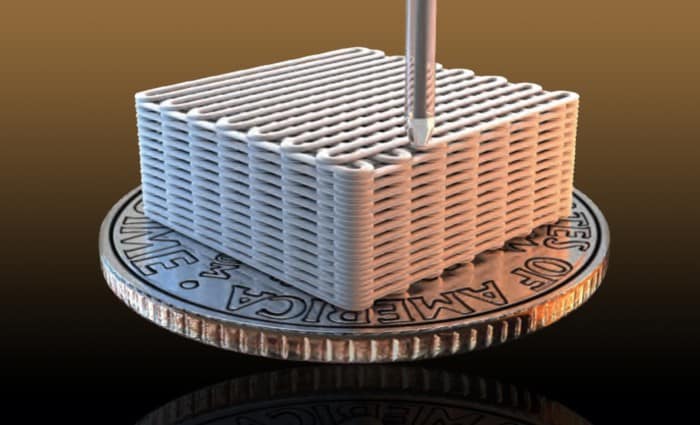Aerogel is a synthetic porous, ultra light material derived from a gel in which the liquid component has been replaced with a gas. It is often referred to as “liquid smoke.”
The 3D printed graphene aerogels are desirable because they have high surface area, good electrical conductivity, are lightweight, have mechanical stiffness and exhibit up to 90 per cent compressive strain. In addition, the 3D printed graphene aerogel microlattices are aid to show an order of magnitude improvement over bulk graphene materials and much better mass transport. However, previous attempts at creating bulk graphene aerogels have led to a largely random pore structure, making it difficult to tailor the properties of the material for specific applications.

Now, a team from California’s Lawrence Livermore National Laboratory employed a 3D printing techniques called direct ink writing to successfully produce graphene aerogel microlattices with a carefully engineered architecture. Their work appears in the April 22 edition of Nature Communications.
During this process, graphene oxide (GO) inks are prepared by combining an aqueous GO suspension and silica filler to form a homogenous, highly viscous ink. These inks are then loaded into a syringe and extruded through a micronozzle to pattern 3D structures.
“Adapting the 3D printing technique to aerogels makes it possible to fabricate countless complex aerogel architectures for a broad range of applications including its mechanical properties and compressibility, which has never been achieved before, ” said engineer Cheng Zhu, the co-author of an article detailing the journal article.




Poll: Should the UK’s railways be renationalised?
The privatised rail service has always been propped up by public subsidy, so that companies could take their profits, instead of re-investing revenue...